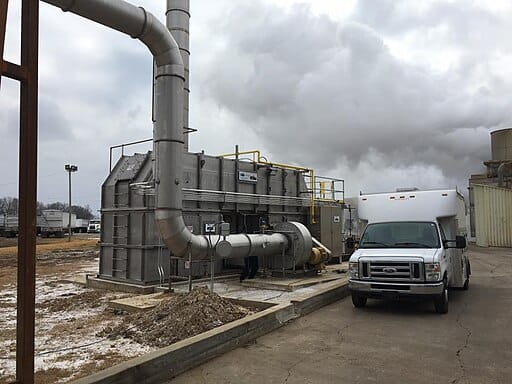Sex workers often harmed by Super Bowl sex trafficking narrative, advocates say
It's Monday, February 17, 2025 and in today's edition, we're covering how sex workers are harmed by Super Bowl sex trafficking narrative, the importance of Medicaid in North Carolina's rural counties and higher water bills following the fires in Los Angeles.
Media outlets and others featured in this edition: Verite News, North Carolina Health News and Los Angeles Public Press
To continue reading the rest of each article, please click the link at the end of the excerpt.
A new resource from the State Democracy Research Initiative makes the current text of all 50 state constitutions available and searchable on one site. This was from State Court Report.
If you're a North Carolina resident and voted in the N.C. Supreme Court race that is still not certified, please check the list of over 60,000 votes that Jefferson Griffin is trying to discard after narrowly losing to Allison Riggs.
Stephen Whitlow from Triangle Blog Blog has more information. Readers can also visit the Orange County, N.C. group's website The Griffin List to search names and more.
For more about the GOP challenger, check out The Assembly’s article by Jeffrey Billman and Michael Hewlett.
Multiple academic studies raised questions about the narrative of Super Bowls as major draws for sex traffickers
by Arielle Robinson February 14, 2025
Sign up for Verite's free newsletters and get the New Orleans news you need three times a week.
As tourists flooded the streets of New Orleans throughout the week leading up to Super Bowl LIX, local law enforcement prepared for another large event — combatting and raising awareness around the supposed increase in sex trafficking.
Media outlets, anti-trafficking groups, law enforcement and other officials often talk about the supposed increased risk of trafficking before the Super Bowl, and the narrative was no different before this year’s game.
In August, officials from the Department of Homeland Security held a three-day human trafficking training workshop with local and state police, service and hospitality workers and more to prepare for this year’s Super Bowl.
And last month, the Orleans Parish District Attorney’s office held a two-day training to teach law enforcement officers, prosecutors and anti-trafficking advocates about the best and latest ways to fight trafficking.
But a number of academic studies have raised questions about the narrative of Super Bowls as major draws for sex traffickers. While there may be an increase in sex work activity around major events like the Super Bowl, the studies found little evidence of an increase in trafficking — where people are coerced into participating in sex acts for money — as opposed to consensual sex work. Law enforcement often conflate the two, said Alex Andrews, co-founder of the group Sex Worker Outreach Project (SWOP) Behind Bars.
“What they end up doing is they come in and they end up arresting a lot of local adult, consensual workers who are living very close to the street, or in some cases on the street itself,” Andrews said.
The New Orleans Police Department, which has in recent years pivoted away from targeting sex workers and their clients for arrest, did not immediately answer questions about prostitution arrests during Super Bowl week. As of Friday (Feb. 14), however, a city crime database shows no prostitution arrests so far this year.
SWOP Behind Bars has been doing bailout outreach — bailing out adult, consensual sex workers who’ve been arrested for prostitution — at every Super Bowl since 2019. They also do community outreach and try to deepen relationships with local groups and public officials to influence policy around sex work.
The group was in New Orleans in the week leading up to the Super Bowl, meeting with people at places like bars, strip clubs, gay clubs and massage parlors.
Rural North Carolina counties would suffer most from Medicaid cuts
Funding reductions proposed by Congress threaten hospitals, children’s health and local economies.
by Jaymie Baxley February 17, 2025
A push by Congressional Republicans to slash federal funding for Medicaid could have “dire consequences” for the more than 1.2 million rural North Carolinians who depend on the program.
That was the key takeaway from a report released in January by the Center for Children and Families at the Georgetown University McCourt School of Public Policy. Rural communities, the researchers wrote, are likely to bear the brunt of the cuts being contemplated in Washington because they make up a disproportionately large share of the state’s Medicaid enrollment.
A little over 39 percent of all Medicaid beneficiaries in North Carolina live in rural counties, according to an NC Health News analysis of the latest enrollment data from the state Department of Health and Human Services. A county is considered rural if it has fewer than 250 residents for every square mile of land.
Suburban counties, which are more densely populated, account for nearly 29 percent of the state’s beneficiaries. Urban counties with large cities make up about 32 percent.
Republicans in the U.S. House of Representatives are weighing various options to reduce federal spending on Medicaid in an effort to offset the cost of President Donald Trump’s plan to extend trillions of dollars in expiring tax cuts. But experts say all of the proposals floated so far would most adversely affect the same rural communities that carried Trump to victory in North Carolina.
Trump was the overwhelming favorite among rural voters in the 2024 presidential election, defeating former Democratic Vice President Kamala Harris in 66 of the state’s 78 rural counties. However, NC Health News found that some of those Trump-supporting counties have more residents enrolled in Medicaid than residents who voted, underscoring the program’s importance to rural populations.
n rural Robeson County, for example, Trump was the top vote-getter among the 47,094 residents who cast ballots. Nearly 66,800 people in Robeson — or roughly 57 percent of the county’s population — are covered by Medicaid.
The election happened less than a year after North Carolina became the 40th state to expand access to Medicaid in December 2023. Under expansion, the maximum allowed household income for eligibility increased to 138 percent of the federal poverty level, or just under $36,000 annually for a family of three.
More than 600,000 newly eligible residents have joined the rolls since expansion took effect, swelling the state’s total enrollment to 3 million. NC DHHS has said the majority of people who gained coverage through expansion live in rural counties. Eight out of 10 of the new enrollees are adults with jobs, the statistics show.
“Medicaid is important in every state,” Leonardo Cuello, a research professor at Georgetown, told an audience of North Carolina-based health advocates during a recent webinar. “But man, is it really extra important in states with lots of rural areas.”
Another cost of rebuilding after LA fires? Higher water bills.
Ratepayers could end up shouldering some of the costs to repair damaged storage tanks and reservoirs.
by Dan Ross 02/10/2025
It wasn’t just homes and wildlands that burned in the Eaton Fire. Vital drinking water infrastructure, like pump stations, storage tanks, and reservoirs, were among the wreckage. As the long-term damage to these water systems becomes clearer, so does the need to figure out how to cover the costs of the repairs.
“We’re possibly looking at modest to large ratepayer impacts for these systems,” said Greg Pierce, director of UCLA’s Human Right to Water Solutions Lab, about another potential cost that residents might have to grapple with as they go about the pricey venture of rebuilding their lives and communities.
“That’s just building back to how things were, before you even get to ideas about, ‘Let’s build back modestly or much more climate resilient,’” Pierce added. “The price tags just get higher and higher.”
The most impacted water systems by the Eaton Fire are in and around Altadena. According to the Foothill Municipal Water District, which takes water from the Metropolitan Water District (MWD) and sells it to systems in the San Gabriel Mountains, several local reservoirs have been damaged, some significantly.
“What normally happens to a reservoir in a fire, the wood roof burns up, collapses into the reservoir,” said Tom Majich, general manager of the Kinneloa Irrigation District, which lost about 40 of its 590 total connections in the Eaton Fire. A simply replaced reservoir roof could cost in the dollar region of six figures, he said. “Or do we rebuild it for fire resiliency or the next seismic event? In that case you go from hundreds of thousands of dollars to dozens of millions of dollars for a newly reconstructed reservoir.”
It’s not just damaged infrastructure that’s expensive. Lost homes mean lost customers. And the longer it takes for homeowners to build back, the longer a water system must operate without that revenue stream to pay for salaries and other operational costs.
The Lincoln Avenue Water Company, which ordinarily serves about 16,000 people in western Altadena, lost more than half of its 4,500 connections to the fire. Officials say smaller water systems are typically lean-run businesses with little room to trim costs. As such, these operators will understandably be eager to get back to normal as soon as possible.
But they face a challenging permitting process that will slow things down. And in rebuilding they face a dilemma: Is the best option for haste or to take every precaution to ensure the new system is best protected from the next big natural disaster?
-30-




